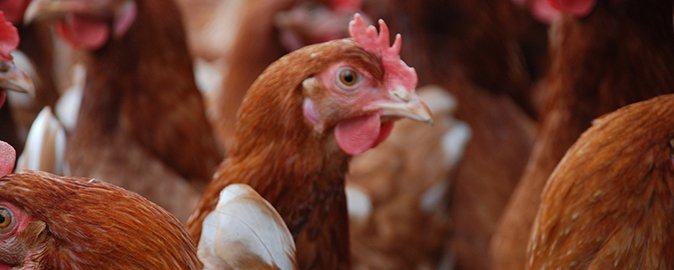Despite having access to outdoor area and exercising more, organic broilers still have problems with foot pad lesions, just like conventional birds.
July 24, 2017

Foot pad lesions are the result of contact dermatitis in commercial poultry. An investigation indicated that the problem is more frequent in organic broiler chickens than in conventional broilers, according to Aarhus University in Denmark.
No previous studies have looked at the causes of foot pad lesions in organic broiler production, but a new report from DCA — Danish Centre for Food & Agriculture sheds light on what could cause foot pad lesions and how they might be prevented.
The researchers behind the report interviewed organic broiler farmers and poultry experts to provide a picture of the situation in organic broiler houses and how farmers can work on preventing foot pad lesions.
The report was prepared at the request of Denmark's Ministry of Environment & Food as part of Aarhus University’s agreement with the ministry regarding policy support.
Bedding is important
An important cause of foot pad lesions in organic broiler chickens seems to be a combination of moisture and manure in the broiler house. If the chickens walk on a humid surface and their own manure sticks to their foot pads, they can get burns on their feet.
"There are many different reasons why floors in broiler houses can become moist. It can be difficult to control the indoor climate because the hatches open and close as the chickens move freely in and out of the building. The farmer must also be aware of the ventilation and of the floor heating," said Inger Anneberg, a postdoc in the Aarhus department of animal science. She and professor Jan Tind Sørensen are the authors of the report.
It is essential to keep the feet of the broiler chickens dry, so it's important to apply bedding in the right amounts and use material with good absorbency, Anneberg and Sørensen said.
In their efforts to maintain dry floors, the farmers in the study used different types of bedding, such as straw pellets, crushed straw, wood shavings and, in some cases, sphagnum in the houses where the chicks start their lives.
Focus on prevention
Foot pad lesions also can occur if organic broiler chickens spend more time in housing than conventional broiler chickens because they are older at slaughter. Feed composition can affect manure consistency. Yet another factor is that the chickens do not exercise enough and do not scratch the ground enough, which would otherwise help remove the lumps from their feet.
Both farmers and experts stress the importance of motivating the chickens to exercise more by, for example, providing them with interesting bedding that they enjoy scratching in.
"In our study, we found that farmers are focused on and interested in how to prevent foot pad lesions. Among other things, the farmers called for investigations of calluses under the feet of organic broiler chickens," Anneberg said.
The report is available in Danish from DCA — Danish Centre for Food & Agriculture.
You May Also Like



